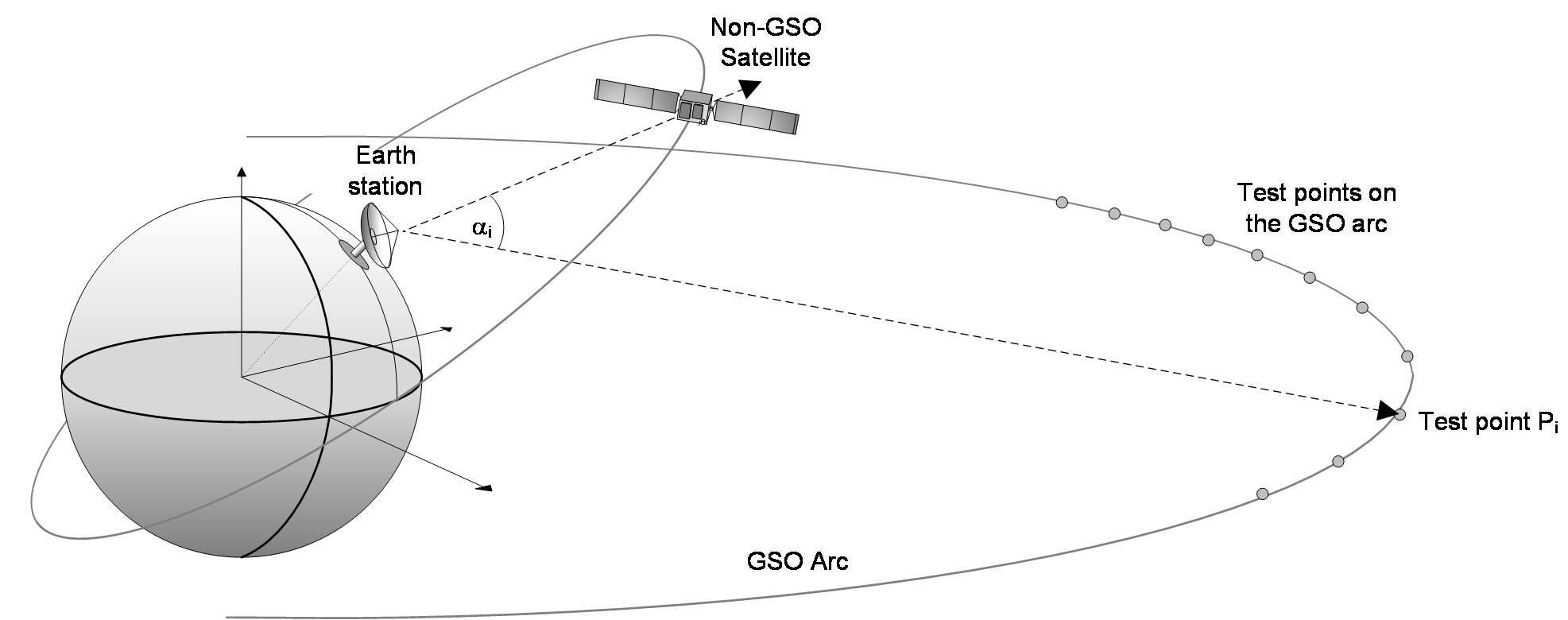What is the Alpha Angle?
Key to understanding the algorithm in S.1503-2 is the alpha or angle. This is an angle calculated at the surface of the Earth, for example at an ES. Consider this point on the Earth’s surface and a set of test points Pi on the GSO arc: there will be lines:
Line a) from this point towards a non-GSO satellite
Line b) from this point towards one of the test points Pi on the GSO arc
There will then be an angle at the Earth’s surface between these two lines, described as one of the test alpha values, namely i.
The alpha angle is the minimum of these i over all test points, hence:
α = min{αi}
This is shown in the figure below:

At the Earth station the non-GSO satellite will appear to be either above (to the north of) or below (to the south of) the GSO arc. This will determine the sign, as in:
α > 0 if the non-GSO satellite is on the southern side of the GSO arc as seen by the ES
α < 0 if the non-GSO satellite is on the northern side of the GSO arc as seen by the ES
α = 0 if the non-GSO satellite is exactly in-line with some point on the GSO arc
The minimum at which the non-GSO satellite can transmit is defined as 0. This is an absolute value so the exclusion zone is defined as being when:
α0 < α < +α0